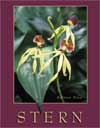 |
1 |  | 
Some species of moss have been used as bandages because of their antiseptic properties and water-holding ability. |
|  | A) | True |
|  | B) | False |
 |
 |
2 |  | 
The water-conducting cells of mosses are called leptoids while the food-conducting cells are called hydroids. |
|  | A) | True |
|  | B) | False |
 |
 |
3 |  | 
In mosses and liverworts, the leafy plant is the major part of the sporophyte generation while the spore-producing structure is the gametophyte generation. |
|  | A) | True |
|  | B) | False |
 |
 |
4 |  | 
In bryophytes, spores germinate into a short filament of cells called a protonema. |
|  | A) | True |
|  | B) | False |
 |
 |
5 |  | 
The major difference between mosses and liverworts is that all liverworts are thalloid while all mosses are leafy. |
|  | A) | True |
|  | B) | False |
 |
 |
6 |  | 
In mosses, the mature sporophyte is green and photosynthetic until the spores are released. |
|  | A) | True |
|  | B) | False |
 |
 |
7 |  | 
In the process of succession, mosses and liverworts are often pioneer species. |
|  | A) | True |
|  | B) | False |
 |
 |
8 |  | 
Which of the following is NOT a characteristic of members of the Plant Kingdom? |
|  | A) | Zygotes develop into embryos. |
|  | B) | Leaves and stems are covered with a cuticle. |
|  | C) | Reproductive structures are covered with a sterile jacket of cells. |
|  | D) | Starch is the major food reserve. |
|  | E) | All of the above. |
|  | F) | None of the above. |
 |
 |
9 |  | 
Liverworts are members of which division? |
|  | A) | Bryophyta |
|  | B) | Anthocerophyta |
|  | C) | Hepaticophyta |
|  | D) | Marchantia |
 |
 |
10 |  | 
Marchantia reproduce asexually by means of |
|  | A) | gemmae. |
|  | B) | antheridia. |
|  | C) | protonemata. |
|  | D) | sporocytes. |
 |
 |
11 |  | 
What is the name given to the flasklike, egg-producing female gametangia of bryophytes? |
|  | A) | antheridia |
|  | B) | archegonia |
|  | C) | capsules |
|  | D) | peristomes |
 |
 |
12 |  | 
Which of the following statements about Marchantia sporophytes is true? |
|  | A) | The capsule is attached directly to the foot without the development of a seta. |
|  | B) | An operculum forms on the apex of the mature capsule. |
|  | C) | The sporophyte hangs down from the underside of the archegonium. |
|  | D) | None of the above. |
|  | E) | All of the above. |
 |
 |
13 |  | 
Which of the following statements best describes the sporophyte of hornworts? |
|  | A) | It is hornlike, contain elaters, and has a meristem at its base. |
|  | B) | It is clublike, contain no elaters, and no setae. |
|  | C) | It has peristome teeth that open and close in response to changes in humidity. |
|  | D) | None of the above. |
 |
 |
14 |  | 
Into which division are hornworts placed? |
|  | A) | Frullania |
|  | B) | Hepaticophyta |
|  | C) | Anthocerophyta |
|  | D) | Bryophyta |
 |
 |
15 |  | 
Which of the following occurs in the sporangia of mosses? |
|  | A) | Spores germinate into protonemata. |
|  | B) | Sperm cells are produced in rows just beneath the surface of the antheridiophore. |
|  | C) | Sporocytes undergo meiosis to produce spores. |
|  | D) | The zygote develops into a multicellular embryo. |
 |
 |
16 |  | 
In the bryophytes, spores produced in sporangia are |
|  | A) | diploid. |
|  | B) | haploid. |
|  | C) | dikaryotic. |
|  | D) | prokaryotic. |
 |
 |
17 |  | 
What is the name given to the protective lid on the capsule of mosses? |
|  | A) | calyptera |
|  | B) | elater |
|  | C) | foot |
|  | D) | none of the above |
 |



 2003 McGraw-Hill Higher Education
2003 McGraw-Hill Higher Education